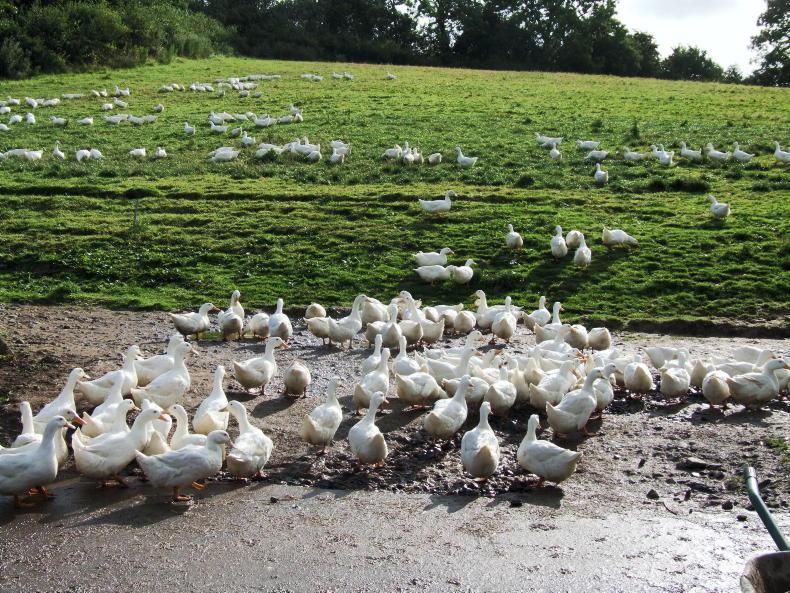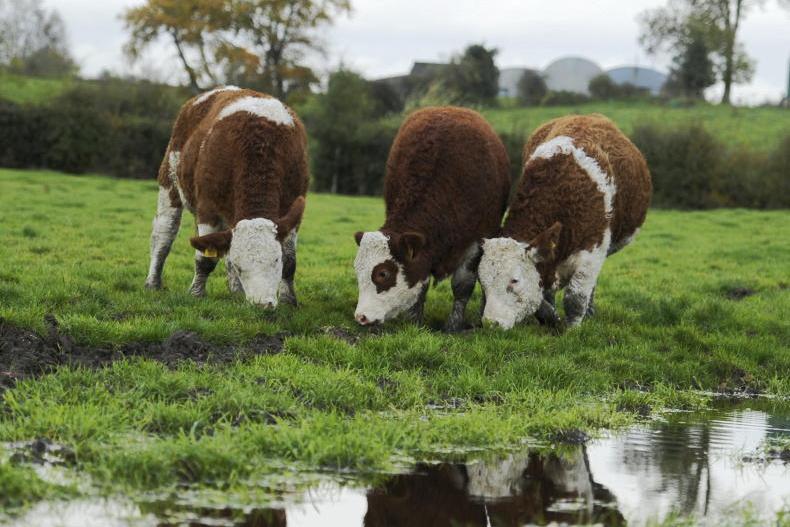My mother kept all the pots and pans under the sink in the kitchen and the pancake pan was used for practically nothing else all year.
It had, over time, from being placed on the gas ring, developed a distinctive accumulation of black greasy material on its outside, but the inside of the small metal pan remained polished and spotless.
The batter of flour, eggs and milk was prepared as soon as we were home from school and beaten with one of those ingenious hand whisks.
The blue-painted wooden handle was held in one hand and a small ratcheted little wheel was turned with the other, making the two pivoted whisks fly around.
These whisks had a habit of starting and stopping, until you lost both patience and concentration and ended up with blobs of batter all over oneself and the kitchen table. In any case, the batter was made and was left to rest, and the anticipation and excitement became unbearable.
The pancakes were never served as they were made but were piled high in the oven between two plates before the feast could begin
At last, following our tea, my mother stood at the cooker, melting butter, and pouring in the batter to make fine thick, small round Irish pancakes. Irish pancakes are markedly different from the large, light, thin French crêpes: Irish pancakes are robust confections with notable body and substance! Lots of heat, smoke and a certain amount of burning were all part of the process and we watched and cheered as she sometimes acceded to tossing a pancake, rather than simply turning it with a knife.
The pancakes were never served as they were made but were piled high in the oven between two plates before the feast could begin.
Origins
Shrove Tuesday is the eve of the 40 days of Lent and in Ireland of the 18th, 19th and 20th centuries, the church forbade not only the eating of meat but also Irish people’s main sources of protein, “white meats” that included milk, butter, cheese, curds and eggs. The making of pancakes ensured the using-up of surplus stocks of eggs, milk and butter and became the substance of the great feast before the long fast.
At this time, tossing the pancake became one important opportunity for marriage divination
Great heat was demanded to make pancakes and in the days of the open fire, it was customary to use the sprigs of Christmas holly and ivy, now well-dried from its time indoors, to provide an intense flame under the pan. At this time, tossing the pancake became one important opportunity for marriage divination.
The eldest, unmarried girl, took the pan and with much trepidation went to toss it in the air in order to flip it over. The objective was to land it perfectly back into the middle of the pan – which of course is easier said than done. Sometimes, the pancake ended up in a crumple or hanging over the edge of the pan or indeed, worst of all, down in the “gríosach” of the fireplace. All of these were taken as portents of the young girl’s marriage prospects for the forthcoming year.
Flipping reluctance
Maybe that explains why my mother was reluctant to partake in any pancake flipping. In any case, when a surfeit had been prepared, the pancakes were delivered one by one to our plates, and we began to wolf them down almost as quickly as they came.
We dressed them with a big lump of butter, a shake of caster sugar from a special silver-topped glass sugar shaker and a squeeze of lemon juice from a small yellow Jif plastic lemon. The melange settled into the pock-marked surface of the thick pancake, and we were in heaven.
At school the next day, when someone boasted of eating 10 or 11 pancakes or more, we knew they were lying!
Our enthusiasm never waned but somewhere between pancake three and five, our stomachs began to protest and if we ever made it to six or seven, we retired from the table holding our bloated sides. At school the next day, when someone boasted of eating 10 or 11 pancakes or more, we knew they were lying! With pancakes it is invariably the case that one’s eyes are bigger than one’s stomach.
Read more
The forgotten traditions of St Brigid’s Night
Folklore and Valentine’s traditions: say it with spoons
My mother kept all the pots and pans under the sink in the kitchen and the pancake pan was used for practically nothing else all year.
It had, over time, from being placed on the gas ring, developed a distinctive accumulation of black greasy material on its outside, but the inside of the small metal pan remained polished and spotless.
The batter of flour, eggs and milk was prepared as soon as we were home from school and beaten with one of those ingenious hand whisks.
The blue-painted wooden handle was held in one hand and a small ratcheted little wheel was turned with the other, making the two pivoted whisks fly around.
These whisks had a habit of starting and stopping, until you lost both patience and concentration and ended up with blobs of batter all over oneself and the kitchen table. In any case, the batter was made and was left to rest, and the anticipation and excitement became unbearable.
The pancakes were never served as they were made but were piled high in the oven between two plates before the feast could begin
At last, following our tea, my mother stood at the cooker, melting butter, and pouring in the batter to make fine thick, small round Irish pancakes. Irish pancakes are markedly different from the large, light, thin French crêpes: Irish pancakes are robust confections with notable body and substance! Lots of heat, smoke and a certain amount of burning were all part of the process and we watched and cheered as she sometimes acceded to tossing a pancake, rather than simply turning it with a knife.
The pancakes were never served as they were made but were piled high in the oven between two plates before the feast could begin.
Origins
Shrove Tuesday is the eve of the 40 days of Lent and in Ireland of the 18th, 19th and 20th centuries, the church forbade not only the eating of meat but also Irish people’s main sources of protein, “white meats” that included milk, butter, cheese, curds and eggs. The making of pancakes ensured the using-up of surplus stocks of eggs, milk and butter and became the substance of the great feast before the long fast.
At this time, tossing the pancake became one important opportunity for marriage divination
Great heat was demanded to make pancakes and in the days of the open fire, it was customary to use the sprigs of Christmas holly and ivy, now well-dried from its time indoors, to provide an intense flame under the pan. At this time, tossing the pancake became one important opportunity for marriage divination.
The eldest, unmarried girl, took the pan and with much trepidation went to toss it in the air in order to flip it over. The objective was to land it perfectly back into the middle of the pan – which of course is easier said than done. Sometimes, the pancake ended up in a crumple or hanging over the edge of the pan or indeed, worst of all, down in the “gríosach” of the fireplace. All of these were taken as portents of the young girl’s marriage prospects for the forthcoming year.
Flipping reluctance
Maybe that explains why my mother was reluctant to partake in any pancake flipping. In any case, when a surfeit had been prepared, the pancakes were delivered one by one to our plates, and we began to wolf them down almost as quickly as they came.
We dressed them with a big lump of butter, a shake of caster sugar from a special silver-topped glass sugar shaker and a squeeze of lemon juice from a small yellow Jif plastic lemon. The melange settled into the pock-marked surface of the thick pancake, and we were in heaven.
At school the next day, when someone boasted of eating 10 or 11 pancakes or more, we knew they were lying!
Our enthusiasm never waned but somewhere between pancake three and five, our stomachs began to protest and if we ever made it to six or seven, we retired from the table holding our bloated sides. At school the next day, when someone boasted of eating 10 or 11 pancakes or more, we knew they were lying! With pancakes it is invariably the case that one’s eyes are bigger than one’s stomach.
Read more
The forgotten traditions of St Brigid’s Night
Folklore and Valentine’s traditions: say it with spoons










SHARING OPTIONS